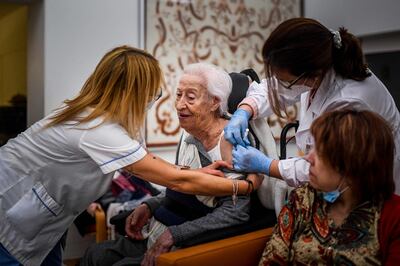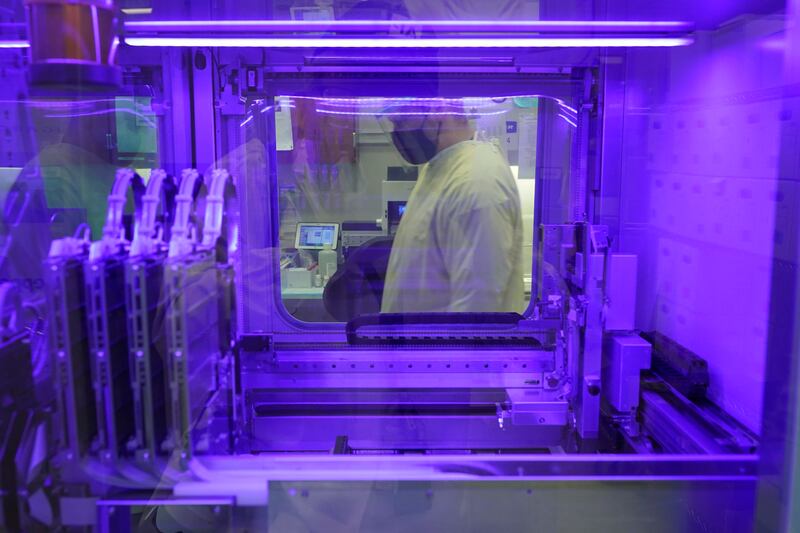Imagine for a moment that in the era we live in today, in which electricity, phones and email have long ago been invented, we were still lighting our cities with oil-burning lamps, sending telegrams or communicating by morse code or carrier pigeons. This begins to capture the disconnect between where we are with genome sequencing technologies and public health in the modern era.
Since the beginning of the pandemic, Sars-CoV-2, the coronavirus that causes Covid-19, has held the world’s attention. When a novel viral pneumonia first appeared in Wuhan, China in December 2019 the disease we now call Covid-19 was all but completely ignored by many leaders in the West. All the while, the virus was spreading undetected for months, even in the wealthiest, most advanced nations that were already using the latest in viral genome sequencing technologies.
Eventually, as cases rose and we realised that pandora's box had been opened for weeks, stock markets tanked and economies shut down and we began to see the first of what would be thousands upon thousands of hospitalisations and deaths.

Even if the pandemic ended today, we would have to contend with inflationary pressures unleashed from spending packages that were necessary to contain the impacts of the virus on our social and financial systems. Surely, not all has been a disaster. Entirely new vaccines have been developed and released at unprecedented speed. But still, even today, some countries are left in the dark, without access to vaccines or the sequencing technologies that are used to track whether the virus might be changing in concerning ways.
There is now clearly a global obsession with viral variants. With each new “variant of concern” we see echoes of the first days of the pandemic. But what are viral variants? Where do they come from and why should anyone care? And most importantly, what are we doing to prevent the next pandemic from unfolding in this same chaotic and uncontrolled way, where we are always playing catch up instead of leveraging all the incredible technologies at our disposal to stay one step ahead of pandemics, epidemics and outbreaks?
All viruses make typos – “mutations” – when they copy their genetic material. This is how new viral variants are generated. Thankfully, most of the time such errors are harmful to the virus. Other times the changes are neither good nor bad. Every so often, however, a virus makes a lucky mistake and either “wins the lottery” or “draws a lucky hand,” coming up with a change or set of changes that are beneficial to it.

Perhaps the mutations help the variant go unrecognised by the defences our immune systems erected against one of its cousins or a vaccine based on a snapshot of how the virus looked in years prior. Or perhaps the changes allow the virus to now transmit more efficiently between people. Often it is a bit of both. It is when these advantageous changes allow one virus variant to gain a considerable edge over its close cousins that we begin to see increased cases of the coronavirus disease.
Soon after, scientists around the world who monitor viruses by whole genome sequencing identify a new viral variant that is causing an increase in cases. In the case of Covid-19, these scientists are alert to changes in the coronavirus’s spike gene, which tells cells how to assemble a harpoon-like protein that the virus uses to invade our cells. Although other changes in the viral genome can matter, too, the spike is particularly important because it is the most effective target for antibodies that block infection, which is why most vaccine makers have focused entirely on the spike when concocting their recipes to instruct our bodies to defend themselves against Covid-19.
So far, we have had four major global pandemic waves – along with many more regional ones – all driven in one way or another by variants. The first wave was driven by a virus that had picked up a mutation in the spike called D614G. Scientists world over did not even realise the importance of this change until the pandemic was well underway. Last winter, we had a modest global wave driven by the Alpha variant, which first emerged in the UK. Because England has one of the best genomic surveillance systems of any nation, the world had an early warning of this variant. Meanwhile, Africa and South America experienced waves from regional variants of concern, like Beta, Gamma, Epsilon and Mu, which drove waves in their regions and spread to many other countries.
Notably, even though scientists in South Africa and Brazil have far fewer resources than those in wealthier countries, groups from these countries have stood out for their prowess at detecting variants and rapidly sharing data with the rest of the world. The Delta variant first appeared on our radar in April 2021 and has caused the largest pandemic wave to date. This variant alone accounts for over 3 million of the 6m Sars-CoV-2 genome sequences, shared via the GISAID – a global database that promotes the rapid sharing of data from all influenza viruses. Considering that, it is safe to say that the Delta variant probably accounted for at least half of the 5.31m deaths recorded so far worldwide. So there is no doubt that detecting variants early and sharing the data about them can save lives.


After eight months of tracking Delta as she swept the globe and caused an untold number of tragic hospitalisations and deaths, a new variant – Omicron – has popped up and swiftly caught everyone’s attention. Omicron’s spike is mutated at 36 particularly important spots among the 1273 positions found in the original spike as it appeared in Dec 2019. Almost all of these changes play roles in escaping antibodies that our bodies make in response to current vaccines or previous infections. Because of heroic scientists like Tulio de Oliviera, Sikhulile Moyo, and Alan K L Tseng in South Africa, Botswana and Hong Kong, respectively, who rapidly shared their viral sequencing results via the GISAID sharing initiative, we are one step ahead of this new variant. Vaccines and tests can be updated all the faster – if need be, and if healthcare workers around the world know exactly what to look out for.
The huge amount of immunity around today because of exposures to previous variants like Delta, and highly effective vaccines makes it hard to ascertain whether or not Omicron is actually less dangerous than the original virus. But we know it can spread easily even among those who have been vaccinated. Even if Omicron cases on average prove to be milder, it is a serious threat simply due to its explosive growth rate and ability to spread in the face of prior Covid-19 immunity.
Regardless, the pandemic will surely someday end. Although I remain very concerned about vaccine inequity in poorer countries that remain mostly unvaccinated, and the continued appearance of new variants, highly promising antiviral drugs like Pfizer’s Paxlovid are being rolled out that will greatly reduce fatalities. But what lessons have we learnt? And where can we improve?
For one, we are underperforming as a global community – not only to share vaccines and medicines in lower and middle income countries, but also in failing to track the many different bacterial, fungal and viral diseases, even though we have the technology to do so at whole genome resolution, inexpensively and to share the data in real time.
Right now, scientists have little incentive to rapidly share their data when they do happen to generate it. And ordinary people often have no incentive to share samples with scientists when they catch a mild illness. When we sequence and share microbial genome data in real time, we can predict which antibiotics will fail and which will work. From there, we can notify our neighbours – within countries and between them – of new viruses that are bubbling up.
A seasonal “cold” that inconveniences a family might cause large numbers of deaths in a nursing home or elderly care facility. World leaders must act swiftly to foster collaborative relationships between public health agencies, entrepreneurs and across industries, the WHO, and GISAID – a particularly critical global sharing community that has proven itself invaluable for sharing pathogen genetic information across borders. If they do not, the world will continue to be exposed to new threats that we find out about all too late.
If there is one lesson this pandemic has taught us it is that we cannot wait for hospitalisations to tick upwards before we find out about new viruses. And as every new variant reminds us, we cannot protect ourselves from pandemics if we allow viruses to stay one step ahead of us.
Jeremy Kamil is an associate professor at the Department of Microbiology and Immunology at the Louisiana State University Health Sciences Center in New Orleans






